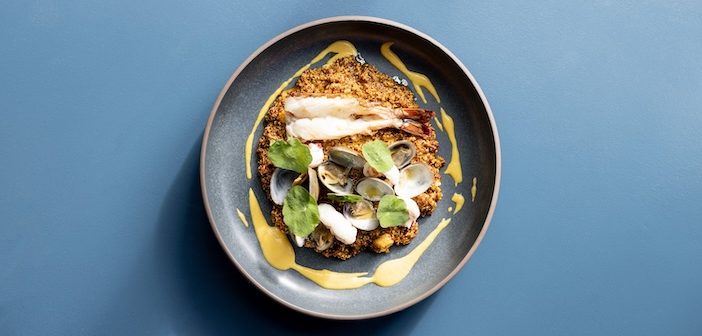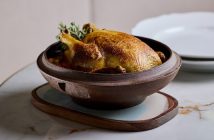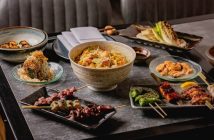Larry is led by the Arb’s connoisseur of culture, Rahnam Pachry, into the subtleties of Peruvian cuisine at Lima Shoreditch, and emerges, to his surprise, culturally enlightened, gastronomically sated, and possibly a little browbeaten…
The door isn’t really a door, or at least not a restaurant door. It’s too…domestic, shop-like, even Dickensian. I could be setting foot into Mr Benn’s – younger readers may miss that reference – to be swept into an Andean adventure. But there it is: Lima, Shoreditch’s lesser-sung outpost of the Peruvian star, not quite tucked away, but not shouting either.
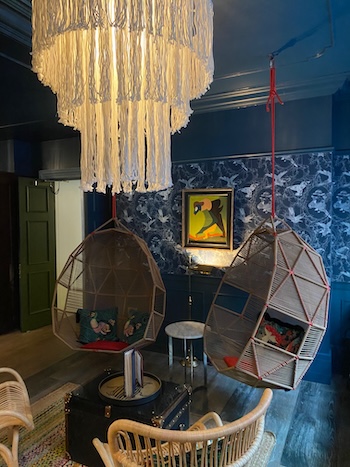 Inside, it’s no easier to place. There are suspended wicker egg chairs, as though one might swing gently with a pisco sour and a dog-eared copy of One Hundred Years of Solitude. The wallpaper is dark and vaguely Andean in pattern, moody in a way that feels intentional. We’re informed – by an inadvertent entry into the adjoining lobby – that this is part of the Sunset Street Hotel. A boutique sliver of hospitality that explains the lounge-like welcome, the slight hush, the feather-light scent of some ambiguous flower lingering near the bar.
Inside, it’s no easier to place. There are suspended wicker egg chairs, as though one might swing gently with a pisco sour and a dog-eared copy of One Hundred Years of Solitude. The wallpaper is dark and vaguely Andean in pattern, moody in a way that feels intentional. We’re informed – by an inadvertent entry into the adjoining lobby – that this is part of the Sunset Street Hotel. A boutique sliver of hospitality that explains the lounge-like welcome, the slight hush, the feather-light scent of some ambiguous flower lingering near the bar.
I’m early. A mistake. Because when Pachry arrives, precisely five minutes late and with the quiet rustle of a pocket square being adjusted mid-stride, he gives me a look suggesting that the truly civilised are never early, only prepared. He is dressed as though he has mistaken lunch for a diplomatic summit: double-breasted navy blazer, cashmere scarf slung just so, and a pair of shoes so immaculate I suspect he levitates between engagements.
“I hope,” he says, not sitting yet, “that you haven’t eaten.” I assure him I haven’t.
“Good. Because this is not the sort of place where one orders ‘a quick bite’. And you, I suspect, would have ordered ceviche and called it Peruvian.” I offer a weak smile. He’s not wrong. We begin, mercifully, with pisco sours. Pachry sips his and makes a noise halfway between approval and pity. “The trouble with this city,” he says, “is it cannot take a cuisine seriously until it is filtered through the lens of fusion. Suddenly everyone was doing ceviche, but no-one knew what it was meant to be.” He eyes me over his glasses. “They were offering it beside truffle fries. Or in bloody tacos. It was Peru via Notting Hill Instagram.”
I mutter something about freshness, lime juice, the usual. He gives me a look. “Peruvian cuisine,” he intones, “is not a trend. It is a cartography of altitude and ancestry. It is Andes and Amazon, Japan and Spain, the influence of the Pacific.” Here, he softens ever so slightly, and steeples his fingers. “Do you even know about Chifa, Lawrence? Or Nikkei?”
I clear my throat in a way I hope sounds like a yes.
“Chifa,” he continues, “is the Chinese-Peruvian school of cooking. A proper symbiosis. Wok-fried lomo saltado, soy-laced marinades with native potatoes, that kind of thing. And Nikkei is the Japanese influence. Raw fish, of course, but married with Peruvian citrus, aji peppers, native tubers. It’s not fusion. It’s heritage.”
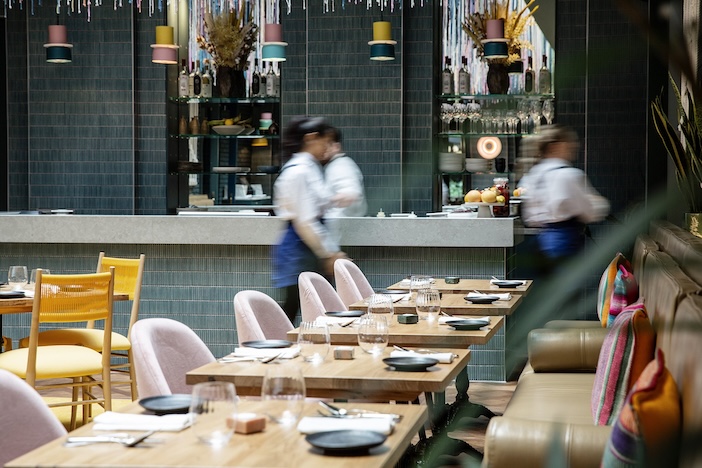
We’re seated now, in the atrium: a double-height glass-ceilinged sanctuary with an extravagant installation doubling for a chandelier. The light is soft, diffused, like being underwater. Staff move with the poise of gallery attendants. Even my water glass is topped up as though by ghostly intervention.
“I’ll order,” says Pachry, and I detect that this isn’t a suggestion.
He points at the menu with the same precision I imagine he reserves for maps and legal documents.
“We’ll begin with the ceviche — not the lime-drenched chaos they serve in the West End. The real thing. And the amarillo brioche, of course. Then the scallops with yellow aji, the wagyu, and the quinoa and avocado salad. Alfajores for dessert.”
I make the usual noises of enthusiastic compliance. He continues, eyes scanning the room as though assessing the moral worth of each diner.
The ceviche arrives first: sea bass marinated in tiger’s milk, the punch of citrus softened by a velvety sweet potato purée and offset by choclo kernels, fat and faintly nutty. It’s not acidic; it’s elegant. A quietly complex dish disguised as something simple. Pachry samples a spoonful and nods once, sagely.
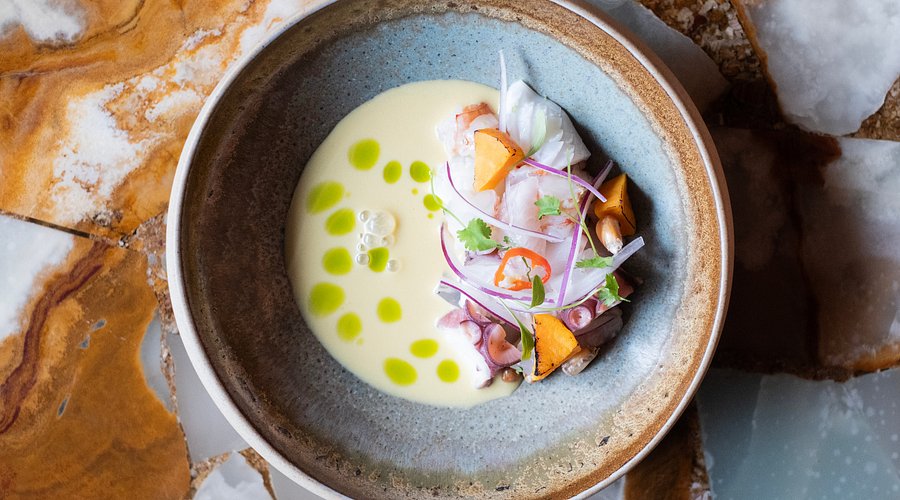
But it is the amarillo brioche that surprises me. Vivid yellow, warm from the oven, with a shiny glazed crust, it tears like the inside of a farmhouse loaf and is served with a small dish of algarrobina butter – dark, rich, and faintly molasses-like. It is, I realise, the Peruvian answer to those precious bread courses one finds in Michelin temples – and every bit as memorable.
Scallops follow; dollops of yellow aji sauce like sunbursts beside translucent coins of shellfish. The wagyu beef comes in the manner of chifa, I assume (I daren’t ask), wok-fried medium rare – if that’s possible – and with divine bite-sized roasted yellow potatoes. Better than any roast beef and gravy I’ve had. The quinoa salad, flecked with lime, coriander, and curls of pickled onion, offers a bright vegetal note – a palate refresher masquerading as a side.
“I must admit,” I say, dabbing at my lips with the sort of linen napkin I usually ruin, “this is all rather good.”
Pachry exhales slowly, “I know.”
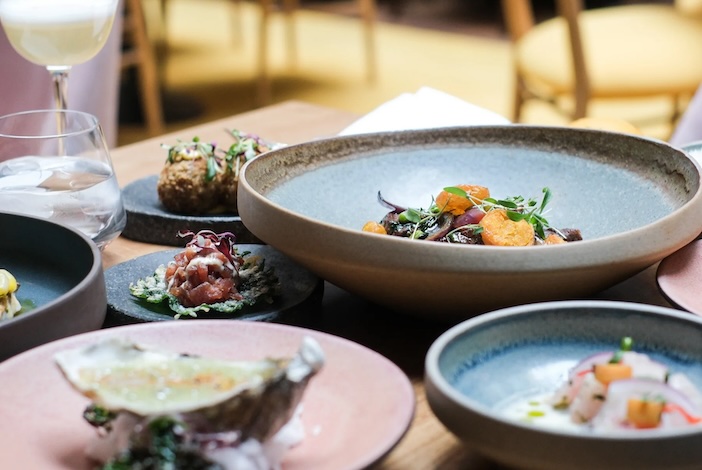
Pachry pauses only once to compliment the chef – Roberto Sihuay, I learn – murmuring something about his work in Lima and his “disciplined application of altitude produce.” I am not entirely sure what this means, but it sounds authoritative, so I nod. The alfajores, when they arrive, are as short as they are buttery, crumbling into the sweetest, creamiest dulche de leche I’ve yet had, and accompanied by a lime sorbet so sharp it could strip the paint off the walls.
We linger over coffee. It comes in small black cups, rich enough to be defiant. Pachry is momentarily silent, gazing up at the chandelier as though considering whether it was truly necessary.
As we leave, through that same unassuming front door that now feels like a portal, I find myself strangely buoyed. I had been, unwittingly, educated. About cuisine, yes, but also about the elegance of surrendering your choices to someone who knows better.
Outside, Shoreditch whirs and clatters, busy with trends and neon distractions. But for a moment I feel centred, grounded. Even grateful.
“Next time,” I venture, “perhaps something Indian?”
Pachry raises an eyebrow, almost smiles. “We’ll see,” he says.
Which, I have come to learn, is his way of saying yes.
Lima Shoreditch, 5-15 Sun Street, London EC2A 2EP. For more information, including details of their new tropical brunch on Sundays, and for bookings, please visit www.limalondongroup.com.

